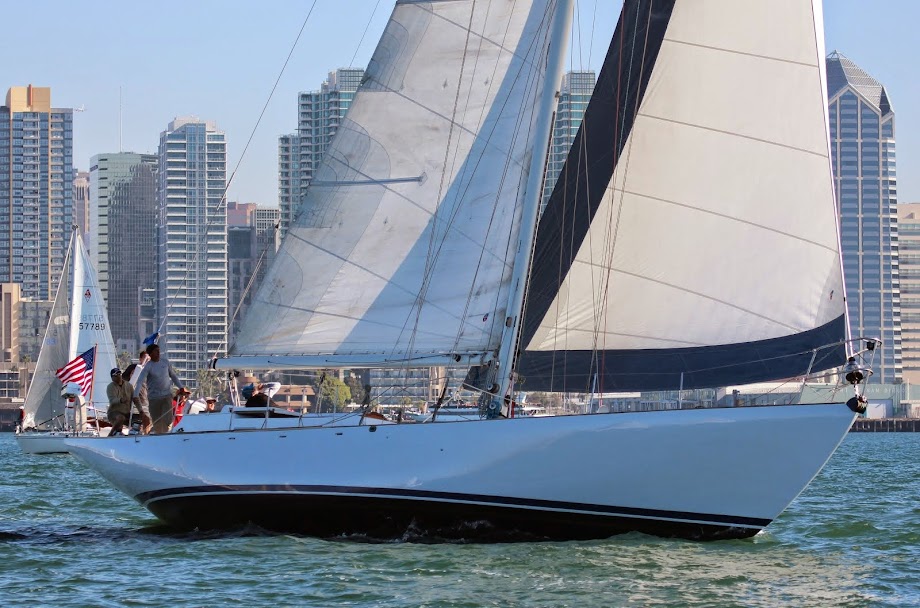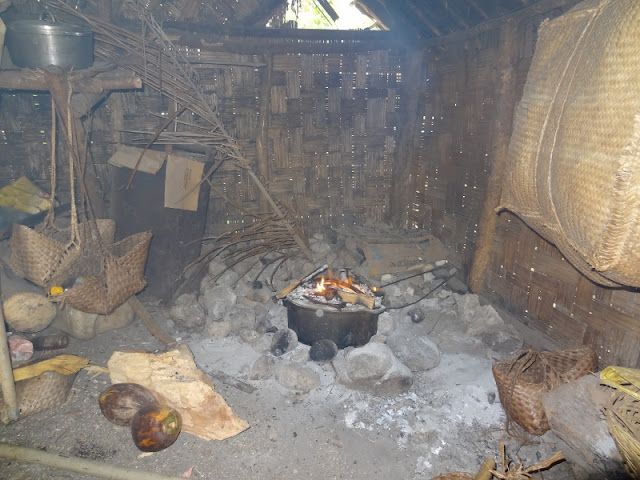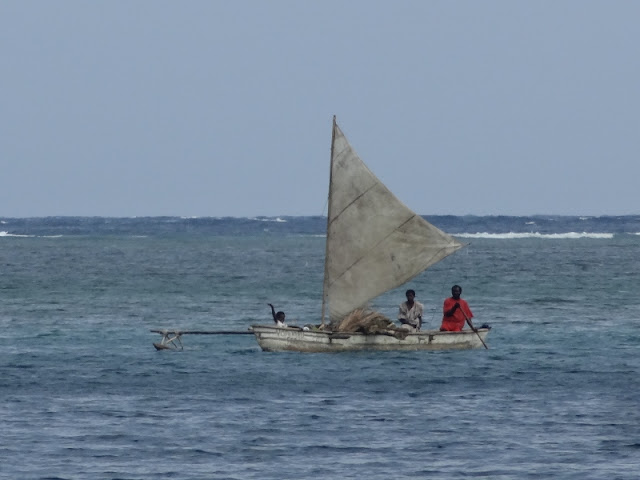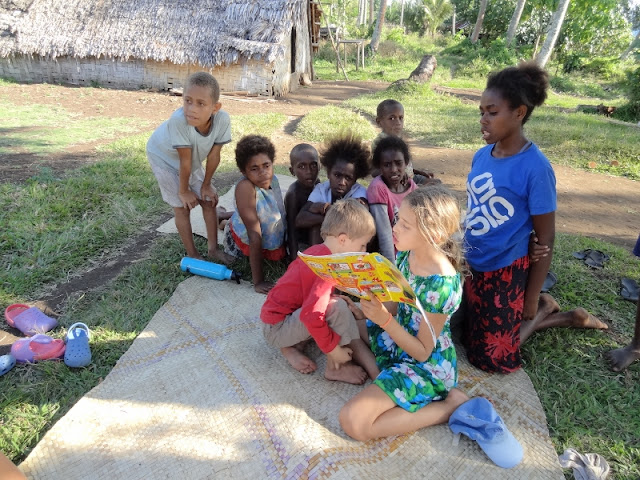Mt. Marum
by Axel
This was my first time
backpacking, so for now it was my best time backpacking. For about the first
hour and a half we hiked through the lush forest before entering the not too
barren ash plain, where there were streams of ash between strips vegetation.
After about 30 more minutes we reached the camp. In the middle was a bamboo hut
with a palm frond roof.
We did another shorter hike to
the caldera. The lava there wasn't erupting, it was more shifting around in
every direction. The lava color constantly changed, mostly various reds, but
sometimes a layer on the top would cool into a black lava rock, only to broken
apart and melted again. We were lucky to be there on a clear day, so we could
easily see the lava in the caldera. And because of clearness it didn't smell
bad or choke us. There was also a new vent about 100 feet wide that opened
about a year ago. On the 1,000 foot deep drop to the lava pits are lines of
white quartz, which didn't match with the black sand around the rim.
We hiked back to the hut where
our tent was set up. After dinner, just before we fell asleep, our crew member,
JD, noticed an intense red glow coming from the volcano. Like I said at the
beginning, it was my favorite backpacking trip, because it was my only backpacking
trip, but I think it will also be my favorite, because it was awesome.
Hiking Mt. Marum
by Gigi
As the dinghy
pulled up to the beach I felt butterflies fluttering around in my stomach. I
was nervous to go backpacking for the first time, to climb an active volcano
and to look inside at the bubbling lava. Even though I'd been to an active
volcano before, and trust me, that one was scary (think chunks of molten lava
flying up at you every few seconds), I was still scared to spend a night
sleeping in the shadow of a volcano whose glow could be seen even from the bay
where our boat was anchored.
My dad, my
brother Axel, our friend J.D., two guides, John and Ruben, Cameron and Haso a
scouting team for an upcoming Japanese documentary on Vanuatu, and I jumped in
the back of a pickup truck that jostled along the bumpy road until we reached
the trailhead. We jumped out and started along the trail with my dad, Axel,
J.D. and me following John and the other's following Ruben. My backpack was
full of heavy water, it was hard carrying it up the steep incline of the trail.
The thick jungle, heavy packs, and steep trail slowed us all down and made us
have to rest frequently. Whenever there was a gap in the trees a stunning view
of the ocean and the sprawling jungle was revealed. The trail was lined with
lush jungle, green everywhere you looked, and heard the loud song of the
cicadas. There were tikis along the path, carved from palm tree stumps and
covered in moss.
After going down
a hill, that I would later learn was the edge of the crater, the jungle opened
up to an ash plane that at first looked like an asphalt airplane runway lined
on either side by palm trees, ferns, grasses, and small pink flowers. We
followed the ash, occasionally cutting through the bush to another runway until
we reached the hut. The hut was a small house on short stilts that had a sign
above the door that read 'five star motel, god bless'. We set up the tent
behind the hut, ate lunch, and prepared for the exciting hike up to the rim of
the caldera.
After going along
the ash plane for a while our guide led us up a dry riverbed dotted with small
pools of water. From there the trail climbed up a steep ridge and the trees
disappeared leaving only small scrub that eventually thinned out to small
bushes scattered across grey ash. The ridge was thin, at some places only three
feet across with forty foot drop offs on either side, and was only one of many
that lead up the volcano, with deep valleys in between. If you turned around
and looked you could see strips of dark grey ash separated by lines of trees
and bushes, and an old volcano rising above it all, it's sides a blanket of
green. From the top it felt as if I was a giant and if I stepped down the hills
it would feel like soft moss under my feet.
The moment I
stepped close enough to see inside the caldera my jaw dropped and I was
rendered speechless. The sides of the caldera were striped with white rock that
contrasted with the gray-black ash that colored the rim. Thin lines of orange,
pink and yellow ran in between the white, and colorful rocks broke up the
darkness of the ridge. But the most amazing sight, the one that drew your eyes
away from everything else was the glowing, bubbling lava at the bottom of the
caldera. It looked as if it were angry and restless, shifting every which way,
splashing up to splatter the sides of the pit with glowing red that quickly
darkened into hard black rock. The caldera was a thousand feet deep and thousands
of feet wide. There were two vents, we were looking into the big one and about
a thousand feet away was a smaller vent that opened up in an eruption a year
ago, and from where I was standing I could just see the red glow coming from
it. It was one of the most stunning sights I had ever seen. Leaning over the
rim of the caldera I could feel the heat radiating off the molten rock to warm
my face and hands, I could smell the sulfur in the air and see the steam and
ash rising in a dark plume into the sky.
We walked along
the thin, dangerous rim, that had a steep cliff on one side and lava on the
other and got to a wide flat ash plane that lead up to another vent that was
steaming so much that I could see nothing except the smoke. Here the sulfur was
choking, so I could not stay on the edge very long.
When the sun was
low in the sky, it was time for us to head back, we had to have enough daylight
to return to camp, so we climbed back down the ridge, through the riverbed, and
back across the ash plane to the camp. Once the sun had set and we had eaten
dinner, I walked out to the runway and saw the bright red glow that the lava
had cast over the shadow of the mountain. It was brighter than the glow of any
city, it lit up the night like a thousand red searchlights all shining from the
center of the volcano.
In the morning we
packed up our tent and sleeping bags and carried the considerably lighter bags
down to where the car was scheduled to meet us. But when we arrived at the base
of the trail there was no one there, so after waiting for an hour we had to
walk down the road and eventually, out of water, tired and aching we reached
town and were able to get a ride back to our boat. The moment we got to the
beach I ran into the water with my clothes and shoes on not caring that they
were getting wet because it felt so good to be in the water. That night I was
the most tired I had ever been and fell asleep instantly.
The hike to the
volcano was wonderfully beautiful, and standing above melted rock from the
center of the earth is something that I will never forget.
Check out the video of the bubbling lava
https://youtu.be/6BOI_NHXsN8
Check out the video of the bubbling lava
https://youtu.be/6BOI_NHXsN8






























































